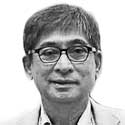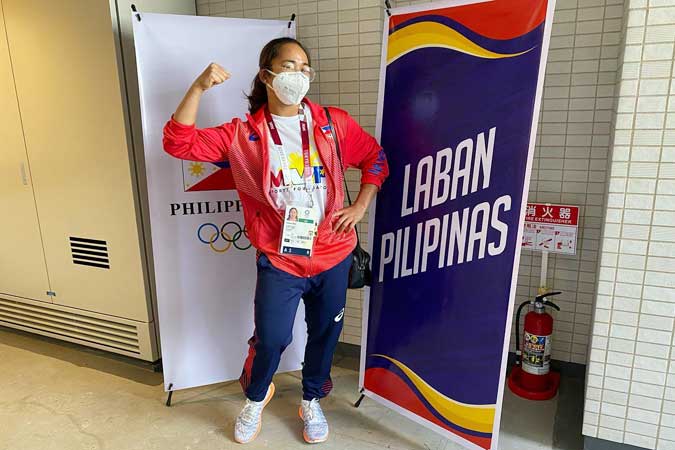
Earning Our Tomorrow
By Philip Ella Juico

With a new Olympic record lift, three-time Olympian Hidilyn Diaz won the country’s first gold medal since its Olympics debut in 1924 at the Paris Olympics, the first in the modern era.
Hidilyn’s gold medal performance once again highlighted the significant role women continue to play in any aspect of economic and human development. Aside from the record- breaking performance, Hidilyn beat the best of the best in her weightlifting class, including perennial rival China.
That last nuance did not go unnoticed among some observers.
The victory also answered the question, “Can the Philippines win an Olympic gold medal?,” which was the title of a recent virtual webinar organized by the Archer Talks and the Benita and Catalino Yap Foundation. Although that question was answered, there was a second one: “How do we get it done?”
Before we answer that relevant query, it may be worthwhile to be reminded and be mindful of the principles of Olympism as espoused by Baron Pierre de Coubertin, founder of the modern Olympics and re-emphasized by Juan Antonio Samaranch. Samaranch is the Spaniard who headed the International Olympic Committee (IOC) from 1980 to 2001:
“Olympism is a philosophy which by blending sport with culture seeks to create a way of life based on the joy found in effort, the educational value of a good example and respect for universal ethical principles.”
In answering these questions, including the first which has been resolved by Hidilyn, we must establish the fact that sports development is a constitutional mandate. Section 19 of the Constitution states, “the state shall promote physical education and encourage sports programs, league competitions and amateur sports including training for international competitions, to foster self-discipline, teamwork and excellence for the development of a healthy and alert citizenry.”
Having addressed the legal basis for the commitment of government resources to sports and physical education, it is time to respond to the second. Incidentally, another reason why the state must devote resources for physical education and sports is the Philippines is committed to the International Charter of Physical Education, Physical Activity and Sport.
The charter “is a rights-based reference that orients and supports policy- and decision-making in sports.” This particular formulation is at the heart of the question “What needs to be done.” In essence, the charter says any person has the right to play the sport of his choice. In short, “sports is for all, regardless of age, talent, gender, capability, religion, race, ethnicity or creed.”
The second question is a bit tricky since a sensible answer will cover a lot of territory. First there is an actual and ideal framework of Philippine sports and an actual and ideal way of breathing life into the framework.
Breathing life into the framework will require a thorough understanding of the logic of the sports sector. To begin with, at opposite ends of the spectrum are mass-based sports and elite or high-performance sports. Mass-based sports start, obviously, at the grassroots, the barangays and municipalities and rural areas. This sector is supposed to provide the extraordinarily talented for elite sports such as the SEA Games, Asian Games, the Olympics, and world and regional/continental championships.
These raw talents at the grassroots are identified ideally through the physical education system in schools and intramurals. Kids who are identified as more talented than the others get to compete in barangay, municipal, city, district, provincial, regional meets and ultimately at the Palarong Pambansa, collegiate leagues, the Philippine National Games (the Philippine Olympics) and the national championship.
Imagine a pyramidal structure with the barangays and out-of-school youth at the base of the pyramid and elite sports and sports for entertainment at the apex.
The other participants in the framework are the different sectors of the body politic. For a truly comprehensive and inclusive approach to a solid elite athlete development program, that program must be anchored on an equally comprehensive and inclusive mass-based plan of action. As the saying goes, “it’s easier to choose 100 elite athletes from 100,000 than from 1,000.” To have a wider base of selection, sectors like farmers, fisherfolk, drivers and conductors, laborers, OFWs, etc., need to be mobilized. These sectors, when consolidated, provide talent for competitions and programs that serve as a feeder to the national training pool and eventually for the national team. Our population is still our biggest resource.
At the middle of all these is the Philippine Sports Commission (PSC) that funds the training of elite athletes and provides policy direction and guidelines for sports development. Ideally, the PSC should be engaging all other line departments in the executive branch especially the Department of Education and Commission on Higher Education for school sports and complementation and synergy with the physical education program. The PSC cooperates with the Philippine Olympic Committee for participation of the Philippines in the highest levels of international competitions.
The PSC is in the middle of all these to represent government. Government involvement is, at this stage of our economic development, crucial. Government, in consultation with the citizenry, has to make basic policy decisions on budgets for mass-based and elite sports, physical education, the role of the private sector and how to encourage it to take part in sports development. The development of software and hardware require enormous amounts of money. It is government that can mandate the allotment of government funds for these purposes.
Inasmuch as the Olympics are the apex of elite sports development, a calculation of the cost of training and preparing an athlete over a four-year period is presented as part of the answer to the question “What is needed to make it happen?” The estimate is based on our own experience over the years as chairman of the PSC and as president of a National Sports Association. The figures do not include all earlier expenses prior to training specifically for the Olympics.
Our most recent estimates, based on actual costs and some assumed outlays, indicate that at least P40 million is needed over four years to make the athlete “battle ready and prepared” to compete at the Olympics. The basic assumptions are the athletes is training either at the United States or Europe, competing in at least 12 high level outdoor and indoor events per year, quartered and training full time at modern facilities, with availability of top-level skills and strength and conditioning coaches, therapist, osteopath and other professionals.
The expenses can be divided as follows: training allowance 8%; professional fees 38%; training camp 24%; competitions 13%; airfare 5%; other expenses 6%; contingency 5%.
To be sure, as the country is able to provide more resources for elite sports and as the PE program is given much, much more than what it is getting, we will have more athletes in proper training venues and in more high-level competitions. Being exposed to high level competitions is essential if all the training one undergoes is to be maximized. Modern training facilities by themselves are not enough.
In spite of the cost, we will continue to participate in all Olympics and in Olympic-type sports events. Participation is part of the cost of being a member of the international community, and participation in the Olympics is part of diplomacy. To participate in the Olympics is to make a statement which countries need to make periodically.
Philip Ella Juico’s areas of interest include the protection and promotion of democracy, free markets, sustainable development, social responsibility and sports as a tool for social development. He obtained his doctorate in business at De La Salle University. Dr. Juico served as Secretary of Agrarian Reform during the Corazon C. Aquino administration.